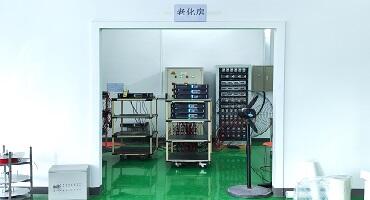
How to choose a suitable industrial UPS uninterruptible power supply?
Many construction projects begin with dignitaries shoveling the first piece of dirt and end with these same men cutting a giant ribbon. But most important to the design engineers, builders and facilities managers involved in the project was the work that took place between the two ceremonies. UPS Uninterruptible Power Supply Selection Whether building a new facility or modernizing an existing facility, important decisions must be made during the design and construction phases, including whether critical power equipment is required. For mission-critical applications where power outages are not an option, uninterruptible power supply (UPS) systems and on-site backup generators can ensure uptime during power disruptions and micro-outages.
A UPS system has two specific functions: regulating incoming utility power and bridging the gap between utility power failure and generator start-up. Products vary in many aspects, including energy storage technology, topology, operating efficiency, size and power density. Since each facility has unique needs, different solutions are required. To ensure you choose the right device for your application, consider these five factors during the selection process:
System performance
The first step in determining which UPS product is best for your facility is to conduct an in-depth analysis of the UPS system's functionality, topology, and power protection performance. run
For decades, the industry standard for UPS runtime was minutes, not seconds, but improvements in technology have allowed on-site generators to start up faster, with most able to fully support the load within 15 seconds. Nonetheless, the default is to provide the UPS with multiple minutes of runtime on battery. This is no longer a reasonable or necessary expense. When seconds matter, minutes matter no more. By selecting a UPS with shorter run times, operators can reduce operating and maintenance costs and minimize system footprint while still maintaining reliability and availability.
Reliability
In engineering terms, reliability refers to the likelihood that a system or component will operate properly for a specified period of time under specified conditions. For electrical equipment, reliability is measured by the likelihood of a system failure. In mission-critical facilities, UPS reliability is critical. Don’t just take a vendor’s word for its product’s reliability—ask for scientific studies, studies, or white papers that back up their claims. It's also a good idea to ask for testimonials from customers with similar needs and applications.
Maintenance
Traditional battery-based UPS systems use electrochemical energy typically stored in valve-regulated lead-acid (VRLA) battery packs. The manufacturers of these systems recommend maintaining the batteries quarterly and replacing them every four to eight years. While these precautions ensure proper UPS and battery operation, they can also be counterproductive—as human error is to blame for most site failures.
Total cost of ownership
When choosing a UPS uninterruptible power supply, it is important to remember that the product with the lowest initial cost may not always be the best long-term solution. Traditional battery-based UPS systems require frequent maintenance, battery replacement cycles, space and regulated ambient temperatures, which all result in higher costs. UPS solutions reduce total cost of ownership due to higher operating efficiency, lower maintenance and cooling requirements, and no battery replacement costs. Additionally, since these units do not have a battery cabinet, they take up much less floor space. To find the right UPS choice, it's important to do your homework and ask questions.
